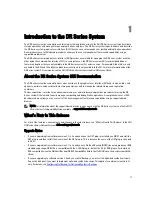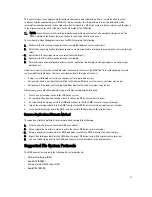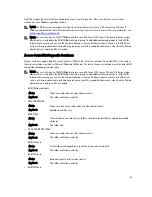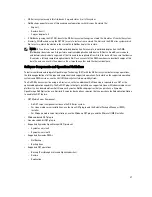
provides you with a smaller backup footprint. By removing redundant data, DR Series systems deliver fast reliable
backup and restore functionality, reduce media usage and power and cooling requirements, and improve your overall
data protection and retention costs.
You can extend the benefits of data deduplication across the enterprise as well–using the DR Series system
deduplication replication function–to provide a complete backup solution for multi-site environments. With 64:1
deduplicated replication (32:1 for DR4X00), up to 64 nodes can be replicated simultaneously to separate, individual
containers on one node. The DR Series systems use compression with replication to shrink the data that is needed to be
moved across the wire to a container.
Replication can be scheduled based on your settings to occur during non-peak periods. The replication schedule you
create can be set and prioritized to ingest data over replication data to ensure the most optimal back up windows based
on your needs. The DR Series systems are Symantec OpenStorage Technology (OST) certified to provide tight
integration with NetBackup and Backup Exec DMA products to allow them to control when backup images are created,
compressed, duplicated, and deleted, so that customers using these products can leverage the DR Series system
appliance as a disk.
The DR Series systems also provide seamless integration with a number of data management applications (DMAs),
including Dell NetVault Backup, CommVault replicated disk libraries, IBM Tivoli Storage Manager (TSM), and others.
Ideal for SMB, enterprise, and remote offices, the DR Series system provides data deduplication and compression
support for multiple data capacity points. For a complete list of supported DMAs and data capacity points, see the
Dell
DR Series System Interoperability Guide
.
NOTE: The DR Series system does not support deduplication of any encrypted data. So, there will be no
deduplication savings derived from ingesting encrypted data. The DR Series system cannot deduplicate data that
has already been encrypted because it considers that data to be unique, and as a result, it cannot deduplicate it.
Streams vs. Connections
This topic describes the differences between data streams and application connections.
Streams can be likened to the number of files written at the same time to a DR Series system. The DR Series system
tracks the number of files being written and assembles the data into 4MB chunks before processing that section of the
data. If the stream count is exceeded, the data is processed out of order and overall deduplication savings can be
affected. For details on maximum stream count, see the
Dell DR Series System Interoperability Guide
.
Connections are created by applications; within a single connection, there can be multiple streams depending on the
application and how many backup jobs are running in parallel over that single connection. Replication can use up to 16
streams over a single port using one connection.
For example, suppose you are running backups using Backup Exec and using DR4100 and the CIFS protocol. If you have:
•
One Backup Exec server connected to the DR4100 over CIFS and one backup running, you have one connection and
one stream.
•
One Backup Exec server connected to the DR4100 over CIFS with 10 concurrent backups running, you have one
connection and ten streams. This means that Backup Exec is writing ten different files to the DR4100.
Replication
Replication is the process by which the same key data is saved from multiple storage locations, with the goal being to
maintain its consistency between redundant resources in data storage environments. Data replication improves the
level of fault-tolerance, which improves the reliability of maintaining saved data, and permits accessibility to the same
stored data. The DR Series system uses an active form of replication that lets you configure a primary-backup scheme.
During replication, the system processes data storage requests from a specified source to a specified destination (also
known as a target) that acts as a replica of the original source data.
19
Summary of Contents for DR series
Page 1: ...Dell DR Series System Administrator Guide ...
Page 10: ...10 ...
Page 34: ...34 ...
Page 138: ...138 ...
Page 160: ...160 ...






























